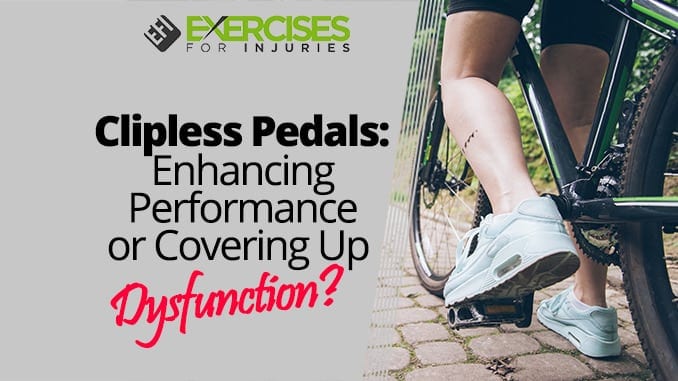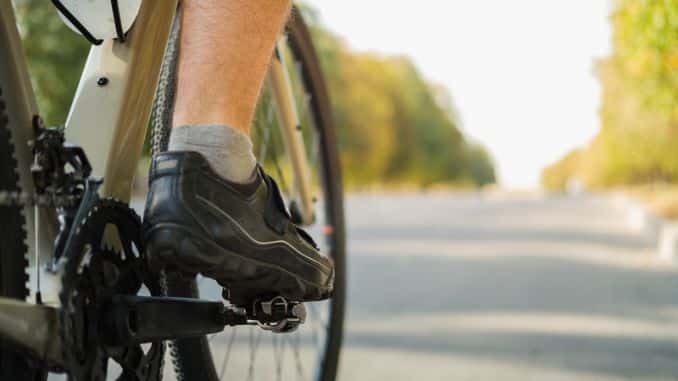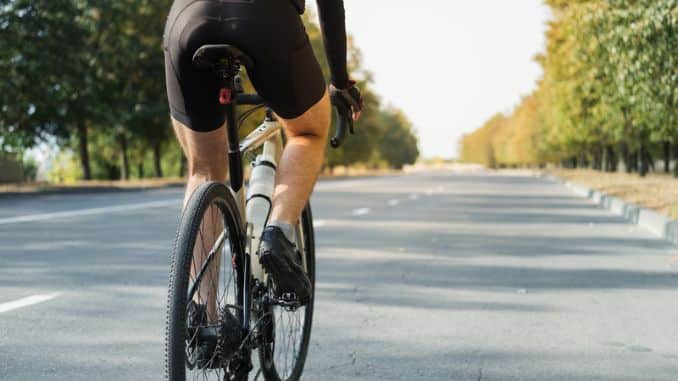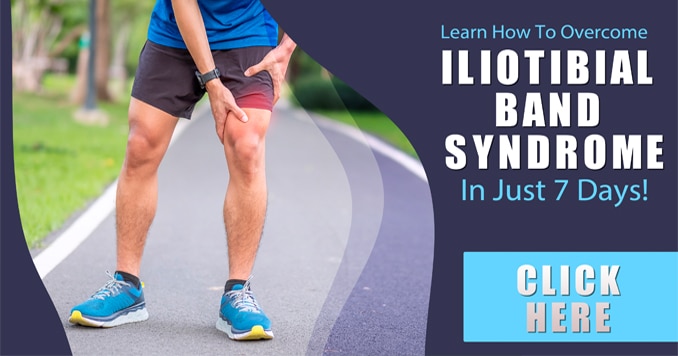
Clipless pedals are specially designed foot retention systems that allow users to rapidly click their feet into place without using straps or cages.
If Something Improves, Performance is it Better?
Better is a relative term, especially when talking about artificial means of performance enhancement. People assume that because Something improves performance, it must be better, and therefore you want to use it all the time. The fact is that equipment can either enhance good technique and fitness or cover up technique and fitness gaps, and there is a vast difference between the two. The first will let you tap into your abilities even more, and the second will lead to plateaus and overuse injuries.
Mountain Biking and Clipless Pedals
In mountain biking, this is seen in the rampant use of clipless pedals, but ours is not the only sport with this problem, and we can learn Something by looking at the parallels between our situations. The best analogy to explain this concept is using a weight belt when squatting or deadlifting.
How Clipless Pedals are Like a Weight Belt
Using a weight belt will help you lift more weight, making it “better” from a performance point of view. However, anyone who knows anything about strength training knows that you don’t use a weight belt all of the time. You save it when needed, but on average, 80-90% of your lifts should be without it.
Why is this?
If a weight belt is “better,” why do the most muscular guys in the world not use it?
The answer is that they know that you must build your technique without it so that you keep yourself honest and do not start to use the belt to cover up technique flaws. Watch someone who knows how to squat, and his technique will look the same with or without the strap, and his best raw squat (using no belt) won’t be too far behind his squat while using a belt.
Compare this with the average gym rat who uses a weight belt for everything. It doesn’t take a highly trained strength coach to see that their technique sucks, and if you took the belt away and exposed their pathetic core strength, they wouldn’t be able to squat nearly as much. Most of us would agree that, in this case, you are better off building your technique and fitness “raw” and using the equipment to enhance that base.
Specialized Equipment is for Competition
Most sports use specialized equipment for competitions and practice but do not use it for training. It would help if you did not use clipless pedals all the time because they can hide technique flaws and allow you to pedal faster and more efficiently.
What Does the Research Say?
You should be able to ride a bike relatively well with some good flat pedals and shoes. In one study (Mornieux et al. Int J Sports Med 2008; 29:817-822), elite cyclists’ pedal stroke looked the same on flats and clipless pedals. Another study (Korff et al. Med Sci Sports Exerc 2007; 39:991-995) showed that pedaling in circles or pulling through the top of the pedal stroke resulted in a less powerful and efficient pedal stroke – in other words, there is no “magical” pedal stroke that is only available by attaching your foot to the pedals.
If you can’t pedal half as well without being attached to your pedals, then that is a sure sign that you would benefit greatly from some time spent riding “raw,” so to speak, and building your technique and fitness base without the aid of a bike. Once you can ride almost as well on flats as you did on clips, go back and try clipless pedals again, and I’ll bet you see a big difference in how effectively you can use them.
Variety is the Key
It is always a good idea to go back from time to time and spend some time on flats, to keep you honest. During the riding season, at least spend a couple of rides each month on flats to check your technique and ensure you aren’t developing any bad habits. During the off-season, ensure you do your indoor intervals with them since you can’t practice clipping in and out.
The dirty little secret is that the best riders are already in this category – take away their clipless pedals, and they would still be the best. Training “raw” is a lesson that every sport has learned, and we would benefit from not trying to be at “100%” all the time and developing our technique and fitness base without the help of artificial enhancements. Clipless pedals are “better” in some regards, but that knowledge needs to come from the perspective of how to use them best.
MTB Strength Training Systems is the world leader in integrated performance training programs for the unique demands of mountain biking. James has helped thousands of riders like you improve their speed, endurance, and skills on the trail. Visit www.bikejames.com to sign up for the free Trail Rider Fundamentals Video Mini-Course.



